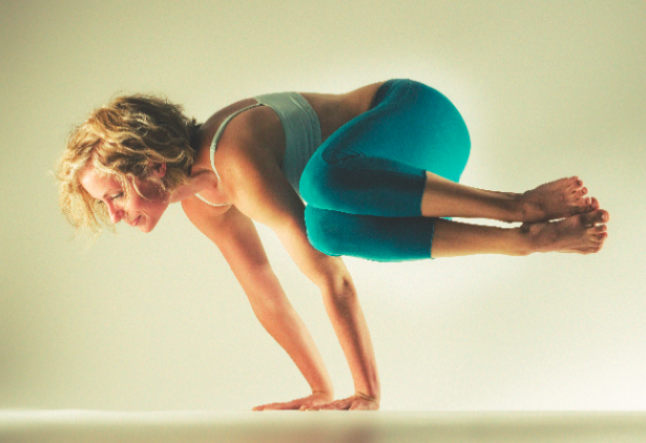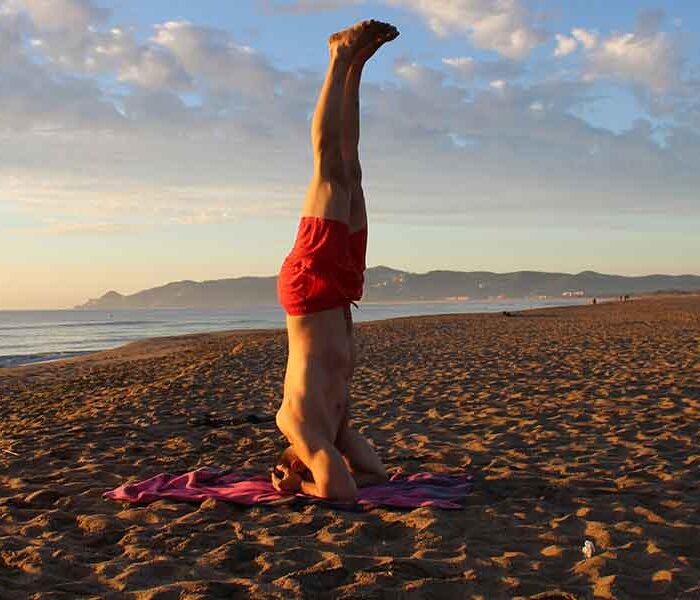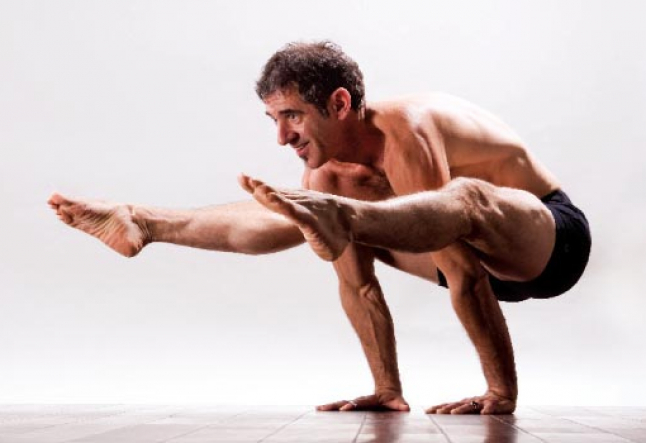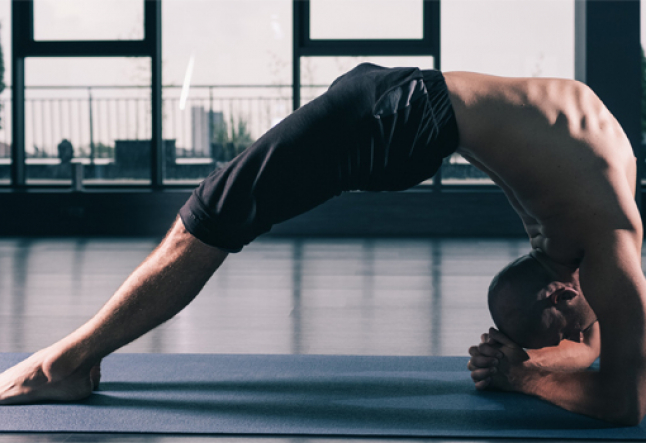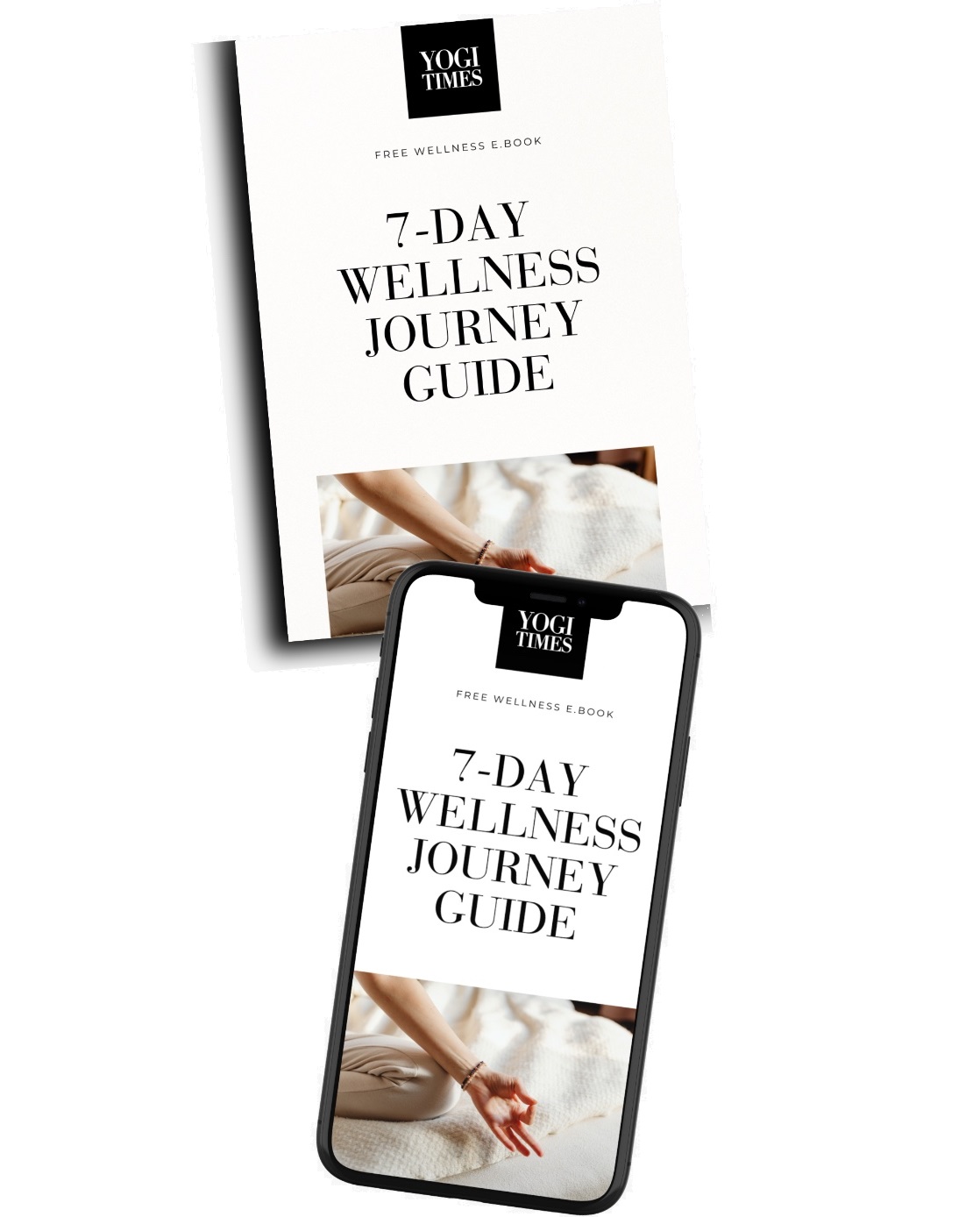The 7 best 4-person yoga poses to deepen connection and trust
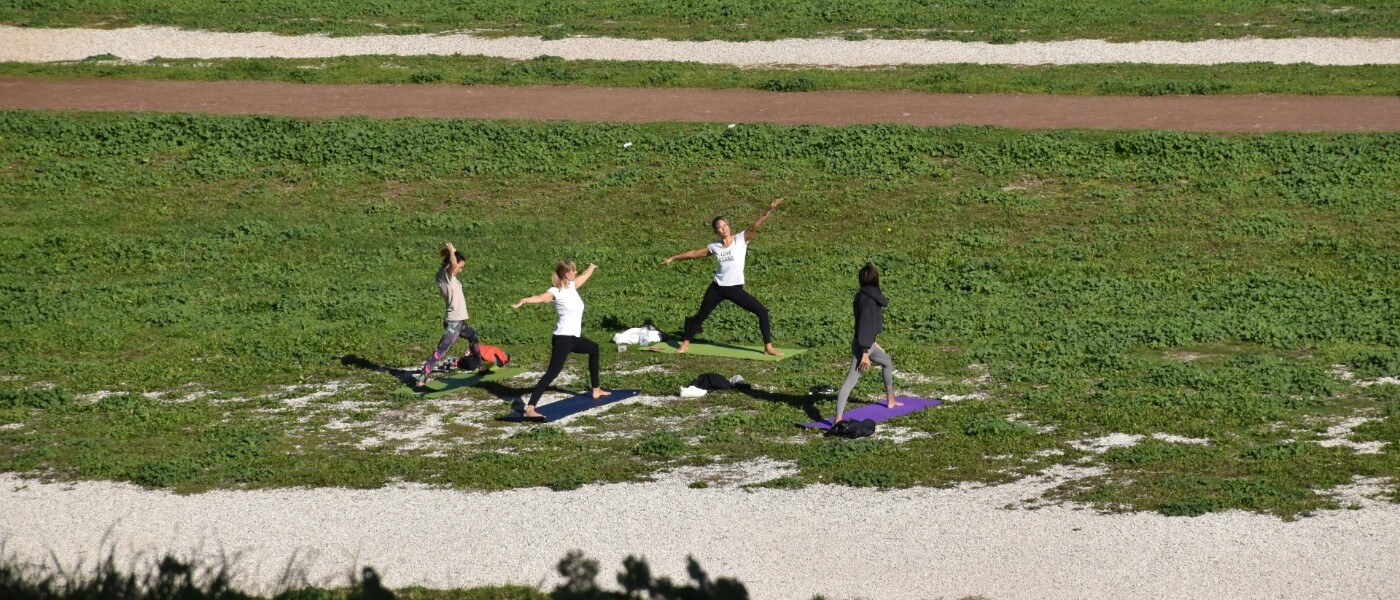
While yoga makes a wonderful solitary practice, it’s also a great way to connect with others. Through shared movement, synchronized breathing, and simply spending time with other yogis in your classes, you can find a sense of community and make new friends.
I’ve experienced this both as a yoga teacher and as a student attending a class. It’s inevitable – before you know it, you’re part of the group!
And if your group happens to be adventurous, you may want to try some acro and partner yoga.
Moving in sync during the class can be very gratifying, sure.
But if you’re looking for a community experience that promotes harmony, trust, and problem solving skills, grab your yoga friends and try these 4 person yoga poses!
Evolution of group yoga practices
From the very beginning, yoga was a communal practice. Although it looked completely different, it was still a shared experience.
From sitting around the fire and learning from your teacher, to following the Ashtanga sequence in a mysore class, yoga encourages togetherness in different forms.
Want to deepen your own teaching path? Explore top-rated online yoga teacher training programs to grow your skills and community.
In the modern times, many of us attend group classes or gather online to share our practice. Along with a natural development of various yoga styles, another practice emerged that called for a more direct connection.
You may call this partner yoga, tandem yoga, or acro yoga. The purpose is the same: you are no longer working alone.
In this type of practice, you are co-creating shapes with other people. While the minimum required number of participants is two, you can get creative with multiple partners, resulting in some fantastic 4 person yoga poses!
Embracing the challenge
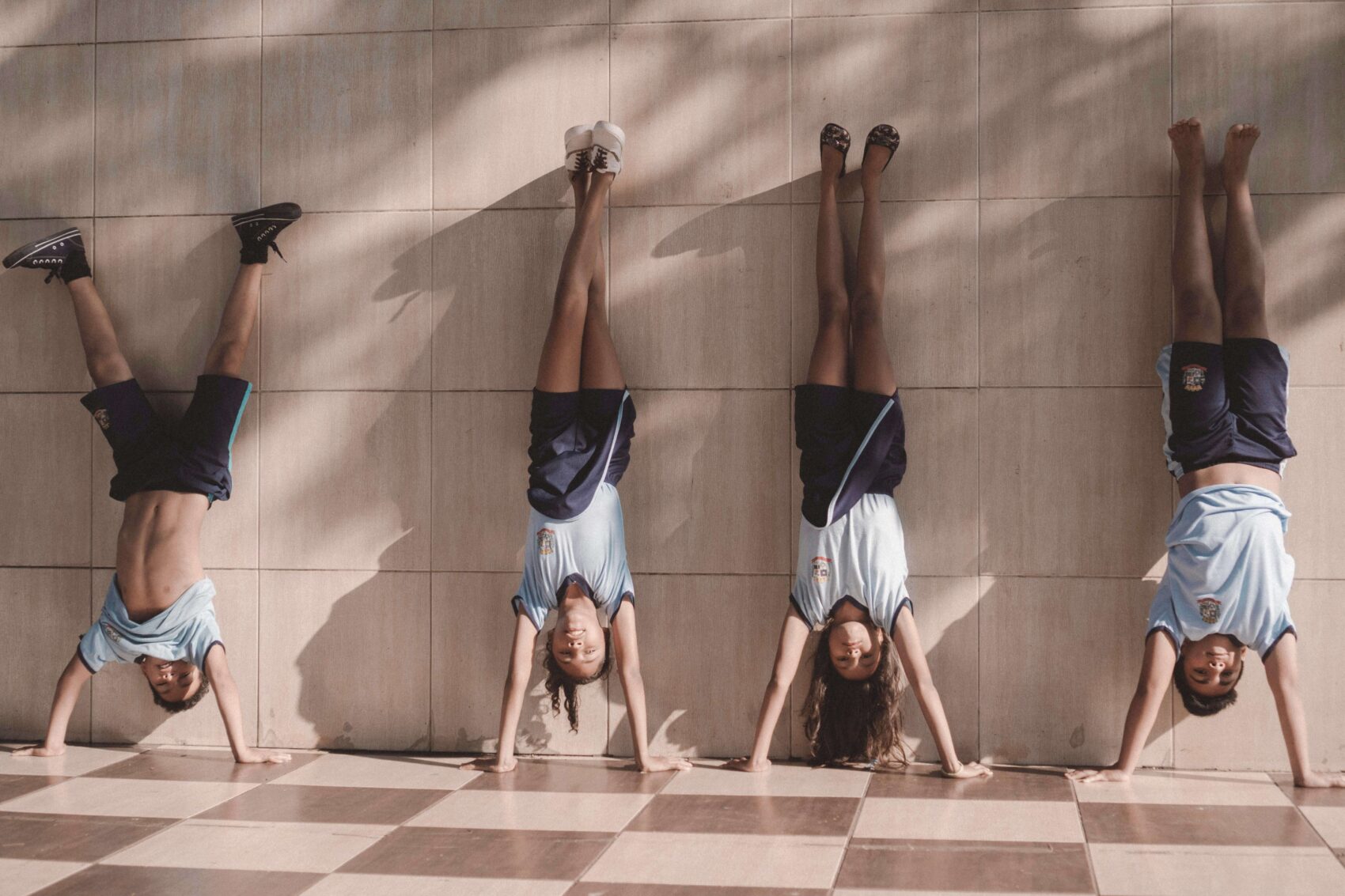
I have to warn you, yoga with three other people is not easy. It takes a lot of coordination, communication, and willingness to “fail” or appear silly. Take it as an opportunity to let go of perfectionism and have some fun!
As adults, we are rarely encouraged to play. This collection of 4-person yoga asanas is my invitation to embrace your playful nature and your inner child.
With that in mind, please exercise caution and take care of each other in your group of four.
Benefits of practicing 4 person yoga poses
It should go without saying that this combination of yoga and soft acrobatics comes with advantages. Here’s what you can expect from practicing 4-person yoga:
- Develop trust and a sense of community among the participants.
- Challenge your physical skills, including balance, core and upper body strength, flexibility and coordination.
- Advance your problem solving skills. Trying to figure out how to combine different yoga poses can be a really fun challenge!
- Encourage playfulness and feed your inner sense of adventure.
- Improve communication, both verbal and non-verbal.
- Acro yoga is all about teamwork, which can be a useful skill in other areas of your life.
- Some of the advanced yoga poses (like inversions or backbends) are less daunting in a four-person formation with the support of other yogis.
Prepare for 4 person yoga
To ensure safety and enjoyment, there are some easy steps to follow while practicing 4 person yoga.
If you equip yourself with knowledge and prepare before you start, you’re much less likely to get injured or injure someone in your group.
It is also much more fun if you know what you’re doing and you’re not constantly fearing for your life.
Roles in Acro Yoga: base, flyer, and spotter
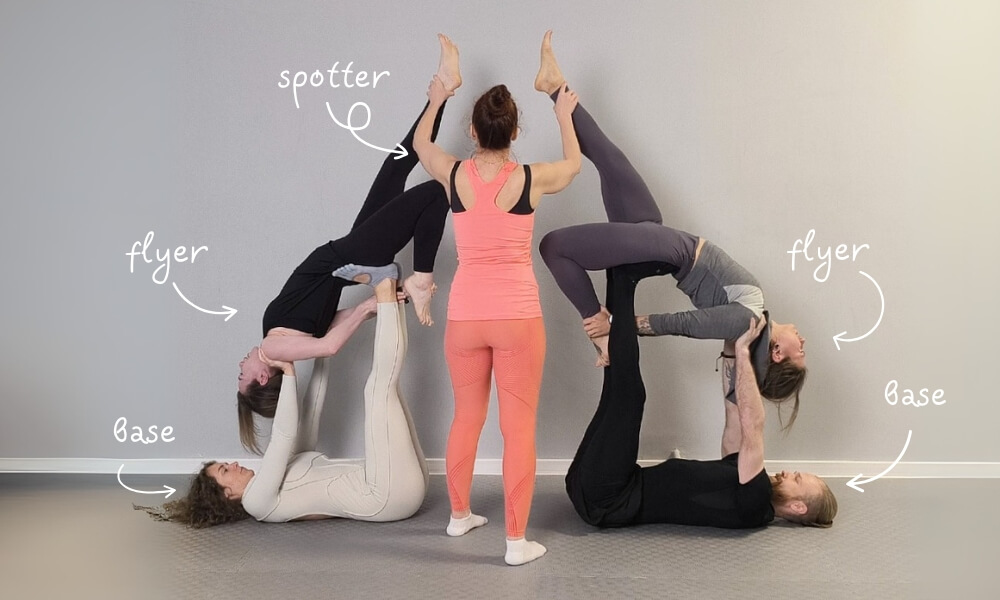
Each person in the group has a designated role, depending on the formation:
- The base is the person on the ground that supports someone else in the air. Think of it as a house foundation – the base has to be steady and strong.
- The flyer is the person who performs the postures in the air, fully or partially supported by the base.
- The spotter is kind of like a security guard and safety coordinator. They don’t execute any part of the formation, their job is to physically and verbally help the participants perform the pose.
These three must have excellent communication and mutual trust, forming the foundation of acro yoga training.
To carry out the practice effectively, it’s important to examine the pose and distribute the roles according to skill and body characteristics.
For example, the base is typically larger and stronger than the flyer. Some roles are assigned based on height because of the way things have to align for the end result. And of course, some poses require extra balance or flexibility, and therefore the role belongs to the person who can perform them.
In a 4-person yoga practice, things are a little bit more complex. It’s common to have multiple bases and flyers. Sometimes, a person can be a flyer and a base at the same time!
Complicated poses also require a knowledgeable and confident spotter. If that’s your role, be ready to catch your yoga friends when things get shaky!
How to practice safely
- Warm up thoroughly before attempting any of the 4-person yoga poses.
- Make sure there is enough space with no sharp or fragile objects around you.
- If you practice at home, ensure that children or pets won’t get in your way.
- Set your boundaries before you begin. Talk to your yoga partners regarding communication and physical contant so that everyone is on the same page.
- Make a game plan. Whatever pose you are attempting, discuss step by step actions and give yourselves opportunities to bail.
- Spotter is non-negotiable. You can rotate this role among the group so that everyone gets to participate without neglecting safety.
- Wear tight clothing that won’t obscure your vision or hook onto anything. Avoid slippery fabrics if you’re a flyer.
Essential warm-up exercises
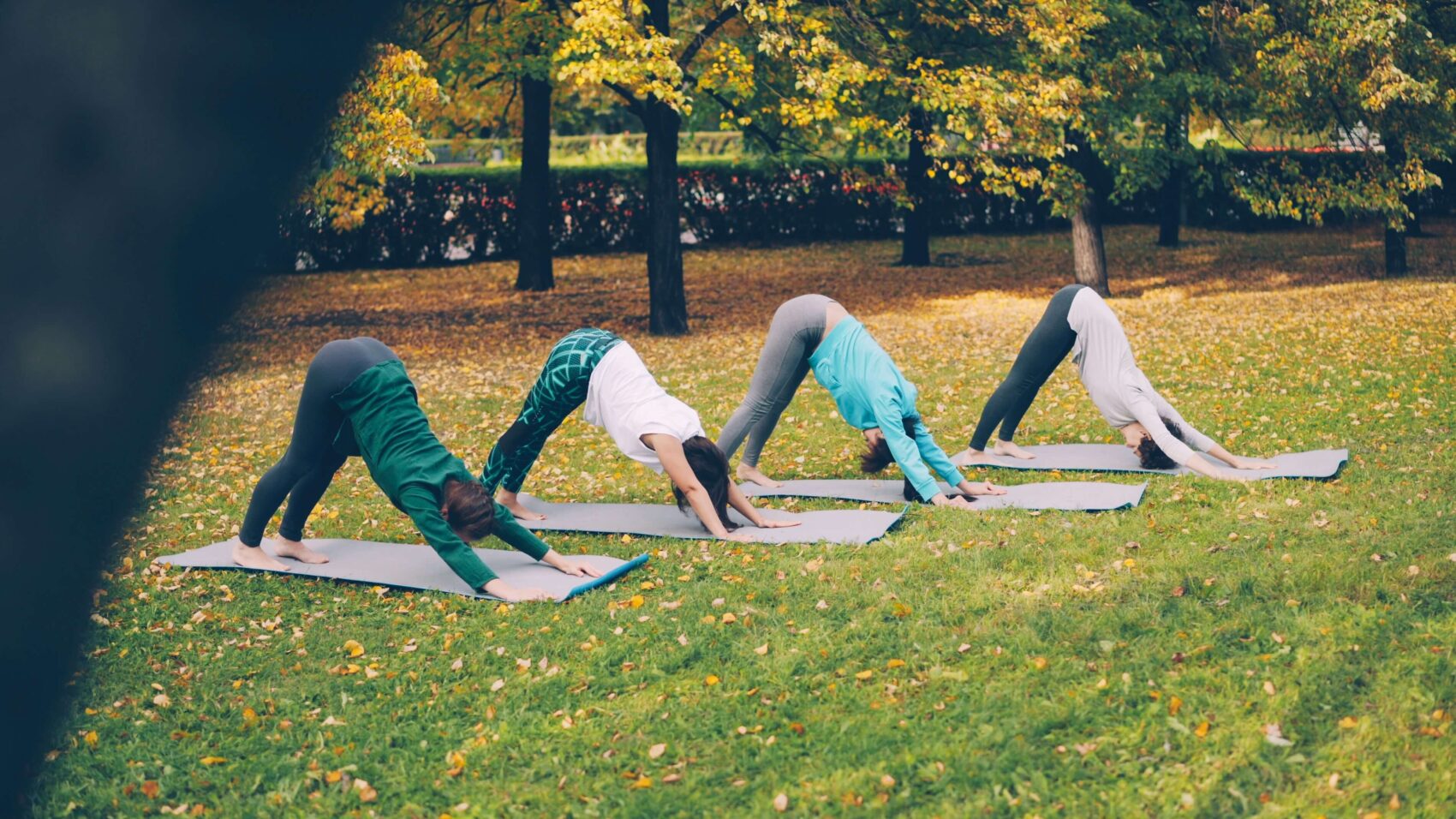
Warming up is the first and most crucial step. In a four-person practice, you’re not just risking a cramp or a strain. Other people rely on you to be in top shape!
The general warm up includes joint mobilizations, gentle dynamic stretches, and simple balance exercises. It’s also a good idea to check in with your breathing and clear your mind.
Other warm up depends on the role you play in the 4-person formationFor example, the base (or bases) should warm up their hips and shoulders to be able to support the weight of flyers.
The poses you plan to do also determine the warm up. If the formation includes an arm balance or handstand, it’s a good idea to warm up the wrists and work on your balance.
If you’re going to be doing a backbend, spend some time on spine mobility. You get the idea!
Accessible 4 person Yoga poses to try
Four-person plank

This 4-person pose is accessible for first-time acro yogis. It’s a fantastic exercise for enhancing core strength and balance. The best part is that everyone is equal, part-base and part-flyer.
How to:
- Arrange yourselves in a square shape on all fours, with each person facing a different “corner”. Align your wrists with the next participant’s outer hip.
- Let each person place one foot on the upper back of the person behind them.
- Starting with the strongest person, move the second foot onto the back of the person behind. Take your time and be sure to communicate.
- Level your pelvis and shoulders for strict plank.
Quartet boat pose
A powerful core conditioner, this pose also tests your balance skills. This is a fun posture you can do together, even without a spotter.
How to:
- Sit in a circle facing the center. The distance from the center for each person should be slightly shorter than the length of their legs.
- Hold hands with people either side of you. Then, extend your legs diagonally up toward the center, pressing against other’s feet for balance.
Trust circle
Similar to the four-person plank, every person in this pose acts both as a base (supporting another person) and a flyer (leaning onto someone else). It can be a little awkward to enter, but that’s where the trust really comes in handy!
How to:
- Arrange yourselves in a square shape seated in Dandasana, each person facing a different “corner”. Align your pelvis with the thighs of the person behind you.
- One by one, press up into a reverse tabletop position, rising to your hands and feet, with your hips lifted and glutes engaged.
- Lean your head back and rest it on the hips of the person behind you. Shift around if you need to to make sure your head and neck are stable and supported.
- Carefully release your hands off the floor, balancing in a trust circle.
For an easier version of this pose, you can sit closer together and rest your upper back on another person’s legs instead of your head and neck.
Advanced 4 person Yoga challenges
Are you ready for something a little more challenging? Take your group practice to a new level. The poses below require more strength, flexibility, precise teamwork, and communication among all parties.
Double acro backbend

This synchronized acro yoga pose has two bases and two flyers mirroring each other in a beautiful backbend. As the final touch, the flyers connect to create a peak shape with their feet.
How to:
- Both bases lie on the ground with their legs lifted up. In this position, their heads are facing away from one another.
- Coming between them, the flyers stand face to face.
- As the base establishes their feet on the flyer’s lower back, the flyer can begin to lean back. The base catches the flyer’s shoulders with their hands.
- At this point, the flyer can fully transfer their weight off the ground and the base can straighten their legs.
- Reaching between the base’s legs, the flyer can grab one of their own feet to create a backbend shape.
- Extending their free leg, the flyers can “high-five” each other with their feet.
Triple pike

For this 4-person yoga pose, each person is performing a different action. The common theme is the deep flexion in the hip to create a “pike” shape.
How to:
- The base (pictured in black) lies on the ground with their arms and legs extended up.
- The second person (pictured in white) leans their upper back onto the base’s feet, creating a slight heart opener.
- The third participant (pictured in black, on the left) performs a headstand facing the base. As they lower their legs at 90 degrees, the base captures their ankles.
- Finally, the flyer (pictured in grey) performs the pike handstand with their hands on the third person’s ankles and their feet supported by the second person.
This part requires a strong and experienced spotter.
Backbends and inversions

This formation doesn’t really have a name, since it’s a combination of different poses that connect together.
It has one clear base and one flyer, with another person performing both roles. The fourth participant completes the set with the flyer’s support.
How to:
- The base (pictured in black) lies on the ground with their arms and legs extended up.
- The second person (pictured in white) leans their upper back onto the base’s feet, creating a slight heart opener.
- The flyer (pictured in black) steps their feet into the base’s hands facing away from the second person and lowers their upper back into the second person’s hands. This part requires at least one spotter.
- Finally, the last person (pictured in grey) performs a handstand in front of the second person. Reaching overhead, the flyer grabs the foot of the person in handstand, creating another backbend shape.
Conclusion: the transformative power of 4 person Yoga
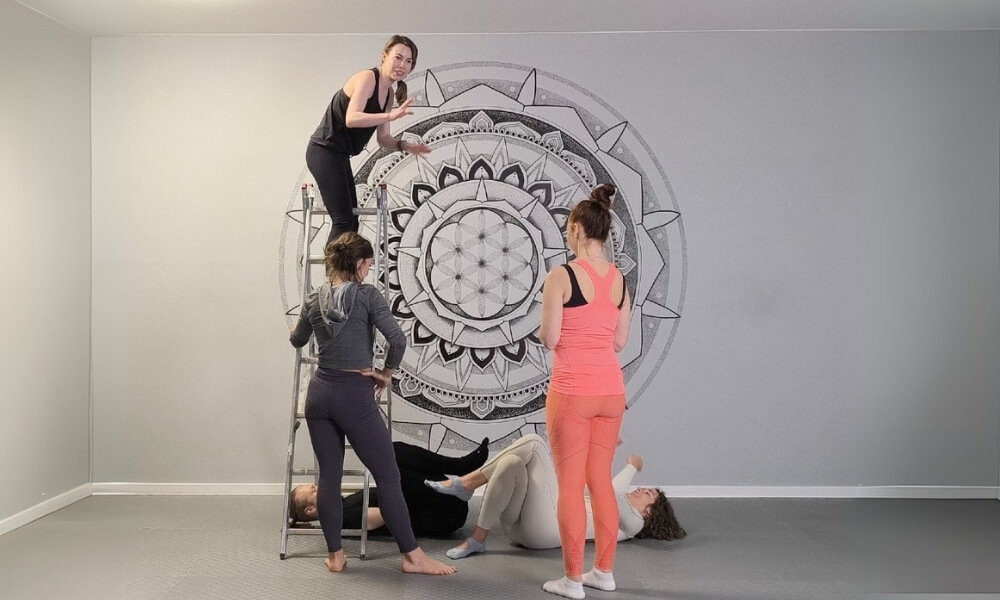
To conclude, 4 person yoga is a dynamic and transformative group practice that integrates strength, flexibility, and communication to enhance physical well-being and emotional and mental health.
Most importantly, it helps to build strong connections that provide a space for mutual development. By working collaboratively, participants form a bond of unity and trust, during the yoga practice and beyond.
I would like to thank my friends Ksenija, Konstantin and Jana who helped me capture the photographs for this article, as well as our spotter Anna. It really goes to show the strength of yogic community and friendship. If you would like to support them, you can follow @konstantin_tkaciov, @janusjaaa and @salimdzhanova on Instagram.
FAQs
Some overlap exists, but not all. Acro yoga often involves lifting and acrobatics, while 4-person yoga can include simpler, grounded poses as well as partner-supported stretches.
Typically 20-30 seconds is enough to feel the benefits without overstraining. The focus is more on connection and teamwork than on duration.
-
- Warm up before starting
-
- Use mats on a non-slip surface
-
- Don’t attempt poses beyond your group’s comfort level
- Communicate if something feels painful or unstable
There are always modifications! Instead of lifting, try grounding poses where participants lean, hold hands, or support each other from the floor.
Yes, there are many safe and playful poses for families. Just make sure to choose age-appropriate variations and supervise closely.
Choose a leader to guide the pace, use clear verbal cues, and move slowly so everyone can adjust. Eye contact and touch-based cues can also help.
Yes, as long as you communicate clearly, respect everyone’s limits, and avoid forcing flexibility. It’s important to warm up and build trust before attempting balancing or lifting poses.
Not necessarily! Many poses can be adapted for beginners, but it helps if at least one person in the group has some yoga or acro yoga experience to guide alignment and safety.
